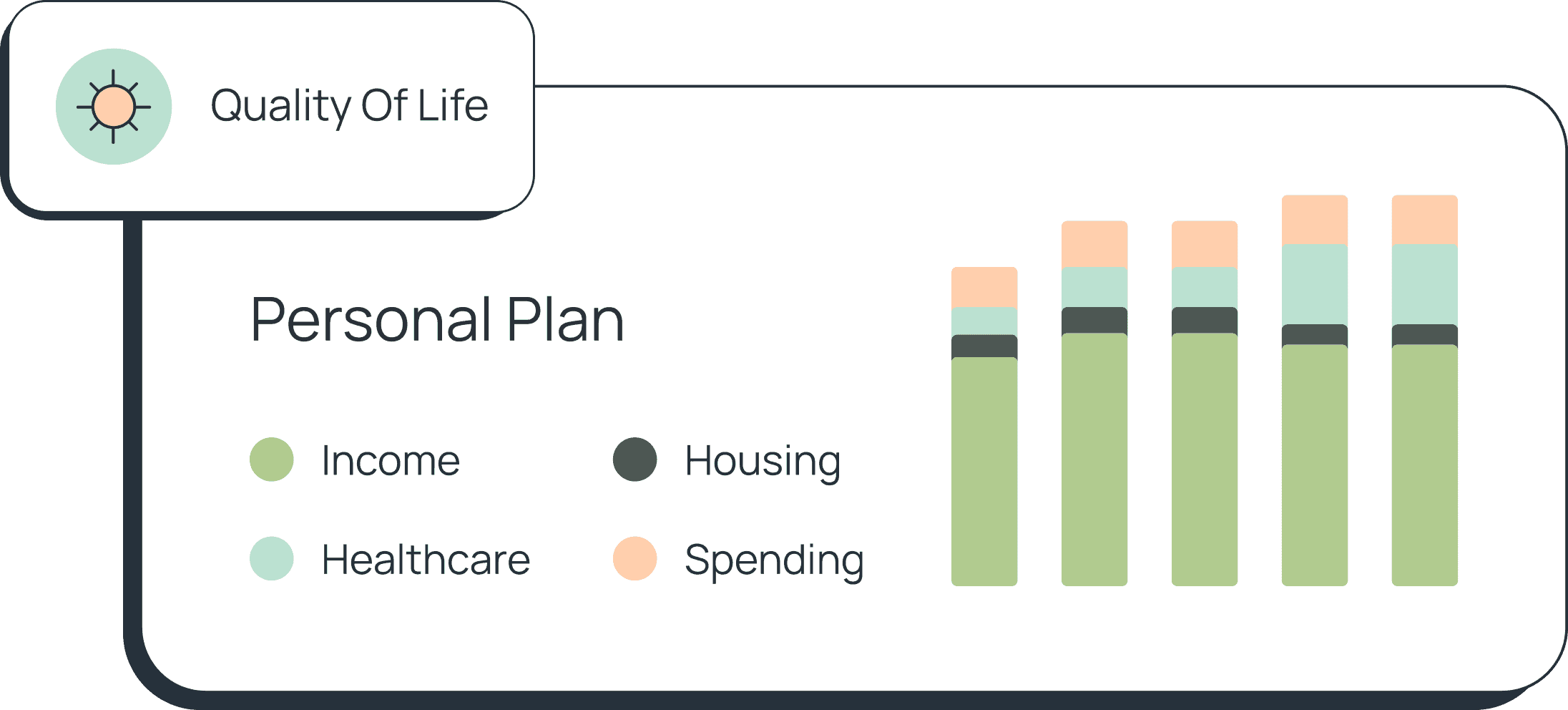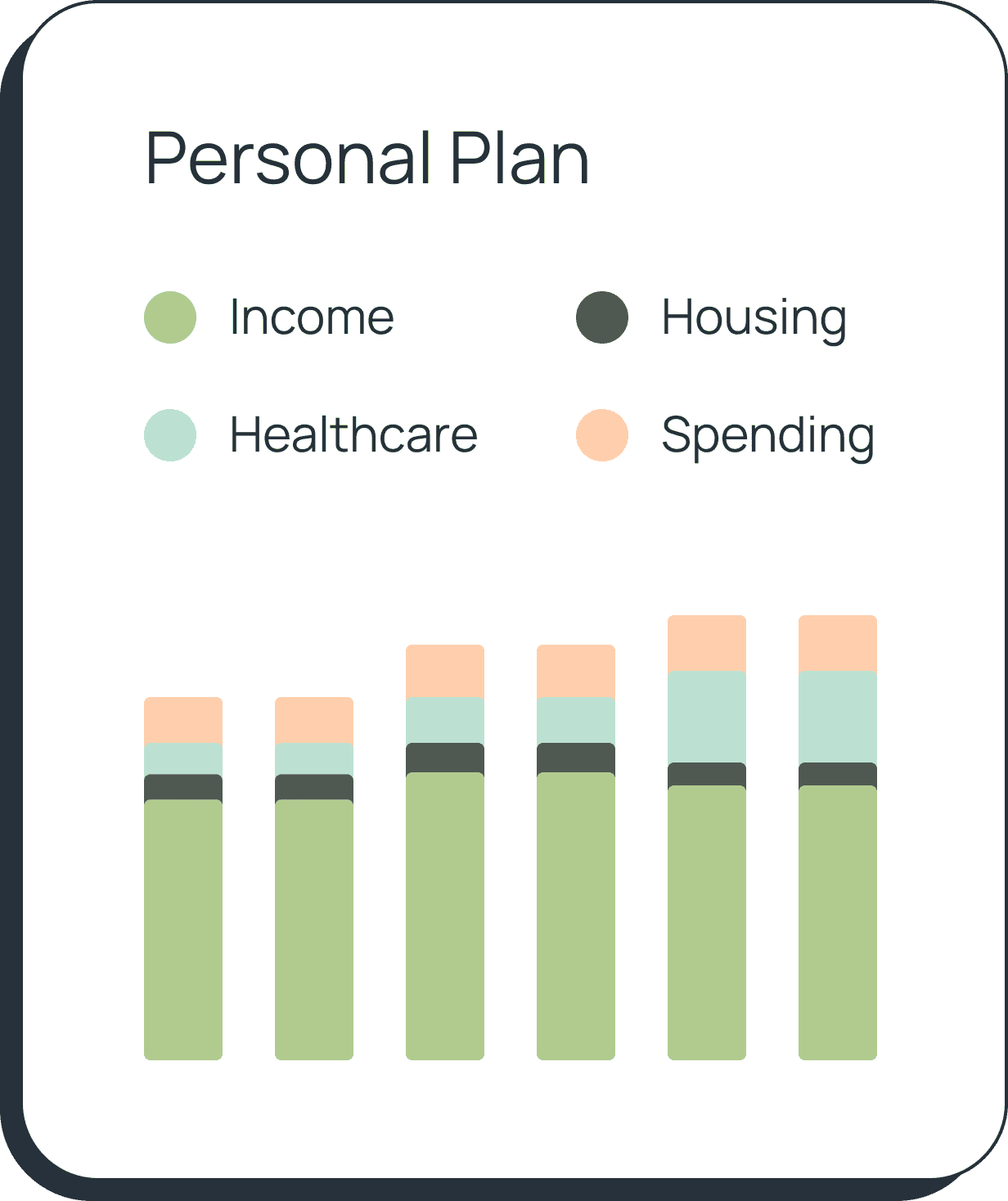Retirement Accounts
Federal government employees use the Thrift Savings Plan (TSP) as their primary retirement savings option, similar to the private sector's 401(k) plans.

R. Tyler End, CFP®
•
Published May 19th, 2023
•
Updated March 6th, 2025
Table of Contents
Key Takeaways
Federal and military employees have access to a retirement account called a Thrift Savings Plan.
Contribute up to 3 percent each paycheck and your agency will match the amount, dollar for dollar.
Contribute an additional 2 percent and the federal government will match $0.50 on the dollar.
Private-Sector vs. Government Retirement Plans
The Thrift Savings Plan (TSP) is a retirement savings and investment plan specifically designed for federal government employees and members of the military. It serves as the federal counterpart to the private sector's 401(k) plans, offering government workers a tax-advantaged way to save for retirement.
A traditional TSP account operates similarly to a 401(k), allowing you to contribute pre-tax dollars, which reduces your taxable income for the year. You'll pay taxes when you withdraw the funds in retirement. With more than 6.2 million members and total assets of $600 billion, TSPs make up a sizable chunk of retirement savings accounts in the U.S.
What is a TSP?
The Thrift Savings Plan, established in 1986, is a defined contribution plan similar to a 401(k) or 403(b). Employees contribute pre-tax dollars, and the funds grow tax-deferred until retirement when withdrawals are taxed as ordinary income. The TSP is a core component of the Federal Employees Retirement System (FERS), including a basic pension and Social Security benefits. Federal employees can manage their TSP accounts and make adjustments through their agency's employee benefits department.
Questions about your retirement accounts? We're here to help.
Schedule your FREE Retirable consultation today.Thrift Savings Plan Eligibility
To have a TSP retirement package, you’ll need to be classified in one of four federal government worker categories:
- Employees enrolled in the Federal Employees Retirement System (FERS): for employees who started work on or after January 1, 1984.
- Employees enrolled in the Civil Service Retirement System (CSRS): for employees who started work before January 1, 1984, and did not convert to FERS.
- Members of the uniformed services: Active Duty or Ready Reserve.
- A civilian in other categories of federal government service
To qualify for TSP retirement benefits, federal employees must typically be "vested" after three years of service. Vesting means you have earned the right to retain your retirement benefits, including your employer's automatic 1% contributions to your TSP account. If you leave federal service before completing the three-year vesting period, you forfeit these automatic contributions and any earnings on them. However, any contributions you make to your TSP are fully vested from the start and remain yours regardless of your length of service.
Roth TSP and after-tax contributions
Initially, TSP contributions were limited to pre-tax funds. However, qualifying government and military employees can now contribute to a Roth TSP. This option allows you to contribute after-tax dollars, meaning your withdrawals during retirement will be tax-free.
While a Roth TSP can reduce your tax burden in retirement, it's important to consider your future tax bracket. Many assume they will be in a lower tax bracket after retirement due to reduced income, but this may not always be true. Paying taxes now can help ensure financial security in retirement and protect against potential adverse changes in tax laws. If you're currently participating in a traditional TSP, you can convert future contributions to a Roth TSP anytime. However, this conversion only applies to contributions made after the conversion date, not funds already in your account.
You may want to consider a Roth TSP if you want to remove that burden upon retirement and don’t mind potentially paying more taxes overall.
Contribution limits for TSPs
Like all retirement savings accounts, Thrift Savings Plans (TSPs) have annual contribution limits set by the IRS. These limits apply to both federal civilian employees and uniformed servicemembers.
2024 TSP Contribution Limits
- Employee Contribution Limit: Up to $23,000
- Total Contribution Limit (employee + agency): Up to $69,000
- Catch-Up Contribution (age 50+): Additional $7,500 → Total: $30,500
- Special Note: Uniformed servicemembers serving in combat zones can exceed these limits due to the special tax treatment of combat pay.
2025 TSP Contribution Limits
- Employee Contribution Limit: Up to $23,500
- Total Contribution Limit (employee + agency): Up to $70,000
- Catch-Up Contribution (age 50+): Additional $7,500 → Total: $31,000
- Special Catch-Up (age 60–63, if plan allows): Up to $11,250 → Total: $34,750
Additional Notes for Uniformed Servicemembers
The above limits do not apply to tax-exempt contributions made from combat zone pay. This special tax treatment allows servicemembers to contribute even more to their TSPs, boosting retirement savings during deployments.
TSP Catch-up by Age Group (2025)
If you're age 50 or older, you’re eligible to make catch-up contributions beyond the standard TSP limit. For 2025, the catch-up amount is:
TSP Catch-Up Contribution Limits by Birth Year (2025)
| Birth Year | Catch-Up Contribution Limit | Total Contribution (with $23,500 base) |
|---|---|---|
| 1961 or earlier | $7,500 | $31,000 |
| 1962 – 1965 | $11,250 | $34,750 |
| 1966 or later | $7,500 | $31,000 |
This means your total TSP contribution limit for 2025 could be:
- $31,000 for most age 50+ workers
- $34,750 if you're in the special 60–63 age range and your plan allows the higher catch-up
Important: If you qualify for the $11,250 catch-up limit in 2025, remember to lower your contribution amount the year you turn 64. If you continue contributing at the higher rate when no longer eligible, you may hit your limit too early and miss out on valuable Agency Matching Contributions for the remainder of the year.
How employee contribution matches work
For employees under FERS and BRS, the federal government automatically contributes 1% of your basic pay to your TSP account, regardless of your contributions. To maximize your TSP, take advantage of the matching contributions offered by your agency. Your agency matches dollar-for-dollar up to 3% of your pay and $0.50 on the dollar for the next 2%, for a total match of 5%.
Experts recommend contributing at least 5% of your paycheck to your TSP to receive matching contributions. This is free money that boosts your retirement savings. While you can contribute more than 5%, it's worth comparing the returns on additional TSP contributions to other investment options.
TSP Matching Contribution Breakdown (FERS/BRS)
| Your Contribution | Agency Match | Total Contribution |
|---|---|---|
| 0% | 1% automatic | 1% |
| 1% | 1% + 1% | 3% |
| 2% | 1% + 2% | 4% |
| 3% | 1% + 3% | 5% |
| 4% | 1% + 3.5% | 5.5% |
| 5% | 1% + 4% | 6% |
Final Thoughts
The 5% matching contribution makes the Thrift Savings Plan a valuable investment vehicle for federal employees and military members. However, consider whether to contribute beyond the match limit. Consulting with a Certified Financial Planner® can help you determine the optimal contribution amount and maximize your TSP. Federal employees should also connect with their agency's retirement plan contact to ensure they fully leverage the benefits.
Share this advice

Tyler is a Certified Financial Planner® and CEO & Co-Founder at Retirable, the retirement peace of mind platform. Tyler has nearly 15 years of experience at leading companies in the wealth management and insurance industries. Before Retirable, Tyler worked as Head of Operations Expansion at PolicyGenius, expanding the company’s reach into new products — turning PolicyGenius into an industry-leading disability and P&C insurance distributor. Before working at PolicyGenius, Tyler worked as Wealth Management Advisor at prominent financial services organizations.
As an advisor, Tyler played an integral role in helping clients define goals, achieve financial independence and retire with peace of mind. Through this work, Tyler has helped hundreds of thousands of people get the financial planning and insurance advice they need to succeed. Since founding Retirable, Tyler’s innovative approach to retirement planning has been featured in publications such as Forbes, Fortune, U.S. News & World Report, and more.
Share this advice

Tyler is a Certified Financial Planner® and CEO & Co-Founder at Retirable, the retirement peace of mind platform. Tyler has nearly 15 years of experience at leading companies in the wealth management and insurance industries. Before Retirable, Tyler worked as Head of Operations Expansion at PolicyGenius, expanding the company’s reach into new products — turning PolicyGenius into an industry-leading disability and P&C insurance distributor. Before working at PolicyGenius, Tyler worked as Wealth Management Advisor at prominent financial services organizations.
As an advisor, Tyler played an integral role in helping clients define goals, achieve financial independence and retire with peace of mind. Through this work, Tyler has helped hundreds of thousands of people get the financial planning and insurance advice they need to succeed. Since founding Retirable, Tyler’s innovative approach to retirement planning has been featured in publications such as Forbes, Fortune, U.S. News & World Report, and more.
Free Retirement Consultation
Still have questions about how to properly plan for retirement? Speak with a licensed fiduciary for free.




